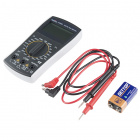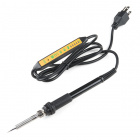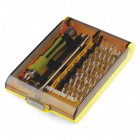Magnetic Levitation
Contributors:
 Alex the Giant
Alex the Giant
Introduction
Let there be light! In this tutorial we'll build a basic magnetic levitator. This guide will go over some of the theory, how to use a magnetic field sensor, and how to use one to build a basic levitation circuit. Finally, we'll go a bit further and build a wireless power floating light.
Required Materials
To follow along with the examples in this tutorial you will need the following materials:
Heads up! The LM358 is scheduled for EOL. We recommend the AS358 as a drop in replacement as the general purpose op-amp. The part is compatible with the 358.
The other parts used that we don't carry are:
- Analog Hall Effect Sensor
- 1N5401 Diode
- 1mH Inductor
Required tools
The tools needed for this project is a multimeter and soldering iron, but having access to an oscilloscope will help with testing as well.
Suggested Reading
If you aren’t familiar with the following concepts, we recommend checking out these tutorials before continuing.
How to Solder: Through-Hole Soldering
This tutorial covers everything you need to know about through-hole soldering.
How to Use a Breadboard
Welcome to the wonderful world of breadboards. Here we will learn what a breadboard is and how to use one to build your very first circuit.
How to Use a Multimeter
Learn the basics of using a multimeter to measure continuity, voltage, resistance and current.
Introduction to Operational Amplifiers with LTSpice
Picking up where we left off in "Getting Started with LTSpice," we delve a little deeper into LTSpice through an introduction of Operational Amplifiers (OpAmps).


